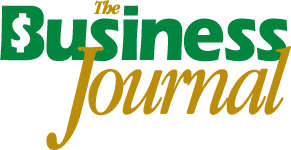This column was published in the June 2005 Issue of The Business Journal.
When you walk into a modern office today you hear quiet. No machinery noises, just the hum of modern office equipment. These people would be helpless without e-mail, fax machines, computers, modern desk and hand calculators, and the copier – some of them larger than a desk, selffeeding, printing on both sides and in four colors.
Forty or so years ago there were telephones that did not allow you to dial direct. Offices had switchboards and you placed your call with the switchboard operator and she made your call, then she would inform you your party was on the line. Then, I was an advertising copywriter with rickety rackety mechanical typewriter so noisy you could hardly hear yourself produce any creative thoughts. The accountant or bookkeeper had the only adding machine in the place and operated it by entering the figures and pulling a handle down. It was a great day for the company when she got an electric calculator with a tape that fed out the figures so she could check them. It was another great day when we did away with that switchboard.
Out of all this wonderful progress one group of loyal employees was forgotten – the secretaries and the ladies in the typing pool. True, they had the best typewriters, but to make more than one copy of a letter or document they had to use black or blue carbon paper, which was about as easy to use as cling wrap with wet hands. After a day of typing and making multiple copies, their hands looked as if they had been working on a car – a dirty car at that.
Then one day a white knight in the form of a salesman representing a company called Xerox arrived at the office. He explained to the receptionist (who was also a typist) why he was there. He was ushered into the boss’s office and was in there hardly a couple of minutes until he left muttering something unprintable. The boss came out later with instructions never to waste his time again with people who had crazy things to sell him – particularly a machine that would just be a fad or passing fancy.
But the “Xerox man,” as he came to be known, kept coming back. He showed the ladies how easy and clean it was to make copies even though we had to use a special brownish looking paper in this strange machine, something like thin brown wrapping paper. The ladies prevailed and a small, black and white desktop copier arrived on a trial basis, and never left. In fact, in later years, it was frequently replaced with larger and larger copiers.
Some of you who are reading this will relate to these events. Many of you will find it hard to believe that people really worked in such Neanderthal offices, but we did.
![]()
